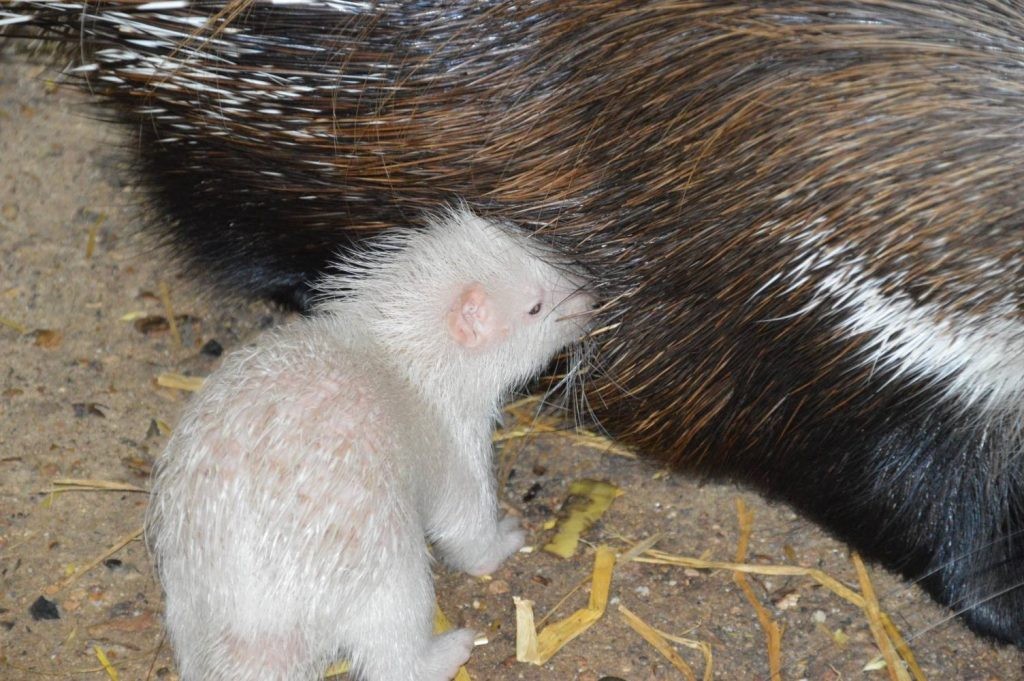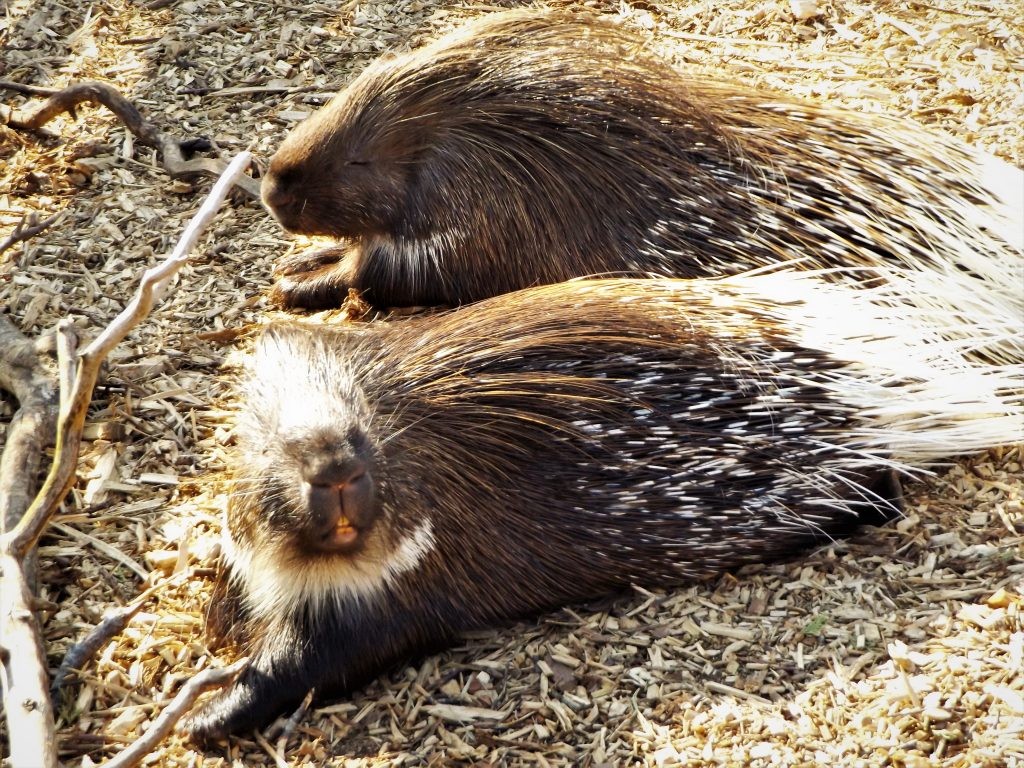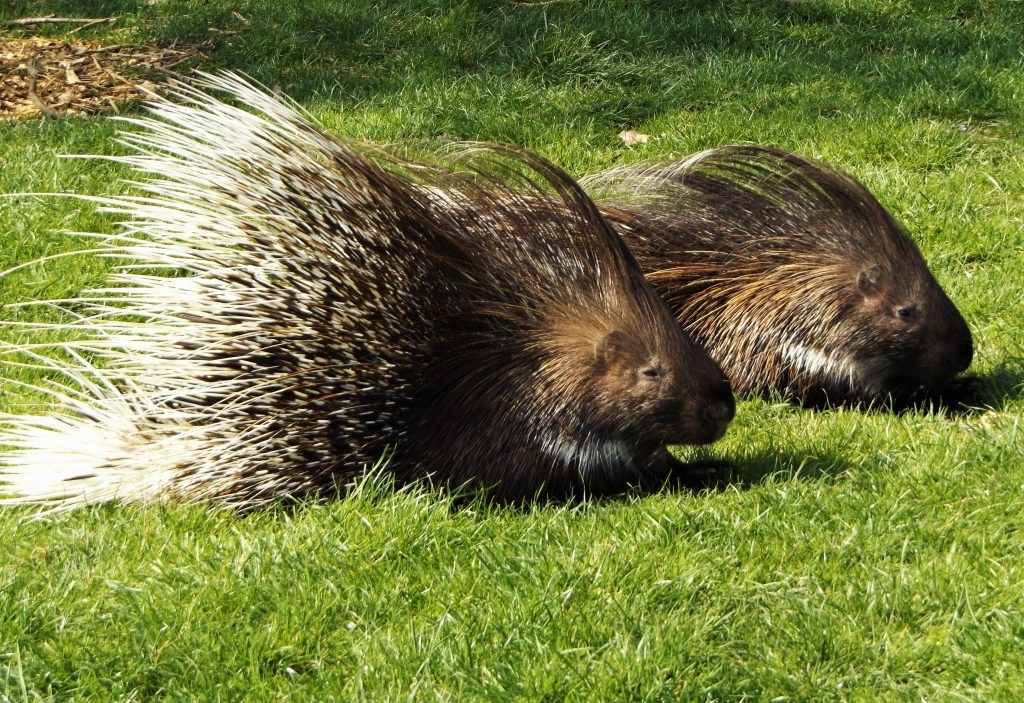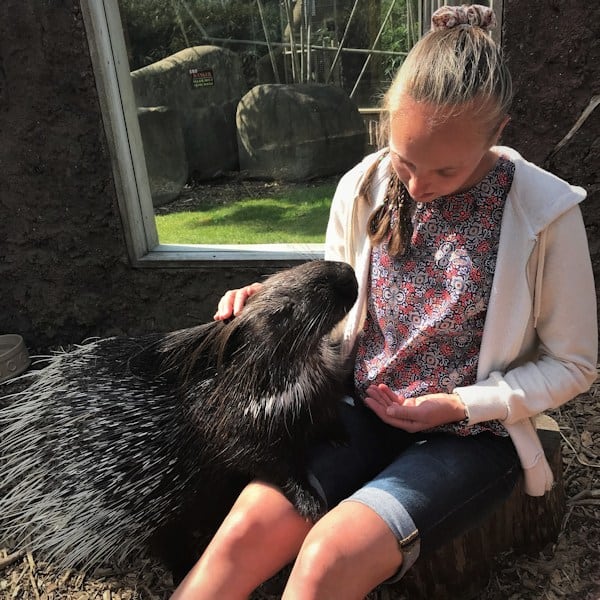This week my blog to you will be about some of the spikier members we have on the Mammal section. If you hadn’t already guessed, it will be about our three African Crested Porcupines, Hystrix cristata.
In the last few years we’ve successfully bred from them and some of you may have been fortunate enough to see the albino porcupettes that were born here at the park. Unfortunately we cant keep all the babies born at WWP so some have had to move onto other collections.
Currently our 3 members are mum Paula, dad Paul and their daughter Pauline.
Porcupine Quills
The African crested porcupine is the largest species of porcupine, the name porcupine comes from the French ‘porc espin’, meaning spined pig, and they are also referred to as the ‘quill pig’. Their distinguishing feature is the coating of the head, nape, tail, and back of the body in long quills.
The quills are a modified hair, made from keratin like human hair, but hardened. They are hollow and stiff with a sharp, barb covered, point at the end and can be up to 35cm long in places . They have muscles at the base allowing them to be raised and if threatened they will run at speed backwards towards the threat, embedding the quills deep into them often causing serious injury and even death through infection.
A question I regularly get asked when around the porcupine enclosure is ‘can they fire their quills out?’, it’s a common myth that the porcupine can fire its quills out, so I’m afraid they cannot! Much to the keepers relief otherwise you’d constantly see us with riot shields going into their enclosure!
The teeth of the porcupine are specially adapted to grind down the plant material they eat, with sharp incisors, and large flat molars. Like all rodents, the incisor teeth grow constantly throughout their life and need to be worn down. We give them branches from various trees to chew on, and large logs to gnaw on to help maintain their teeth.
They would also chew on bones in the wild to keep their teeth sharp and to get a supply of calcium, and so we give them bones occasionally to encourage this behaviour. In the wild they would also eat a range of plant materials, roots, tubers, and crops and we give ours a varied diet, including root vegetables and various vegetables, to mimic the nutritional content of their natural diet.
Porcupines are monogamous, usually staying with the same partner for life. Similar to our group, they live in small family groups consisting of the adult pair and the offspring. They live in burrows of complex tunnel systems, which may be a hole in a cave, rock crevice, or an unused aardvark hole but they also will also dig their own burrows. They’re naturally nocturnal, but as our three have been bred in captivity they’re used to being active during the day. However, sometimes they can be quite shy or lazy (depending on how you want to look at it).
Natural predators for these guys include lions, leopards, hyenas and some large birds of prey, although it is rare for them to succeed in killing a porcupine due to their spiky defence system.
The biggest threat to the porcupine is humans who often illegally trap and kill them for meat, and for their valuable quills. The quills have many uses, including traditional medicine, talismans, fishing lures, and ornaments. The meat is also a local delicacy in many parts of their range.
Often they can be seen as pests and are persecuted by farmers, some farmers will also illegally control porcupine populations by lacing food with poisoned bait. Thankfully for Porcupines there are laws protecting them in Europe, however outside of Europe throughout most of their range they are unprotected and levels of hunting are high and their numbers are dropping fast.
Nancy
Nancy was hand reared as a baby after being kicked out of our porcupine group by her very competitive sibling. However, this has led to her becoming an exceptionally friendly little character. She now calls our sister site, Sandwich Wildlife Park home where you can meet her for yourself on our porcupine experience.






